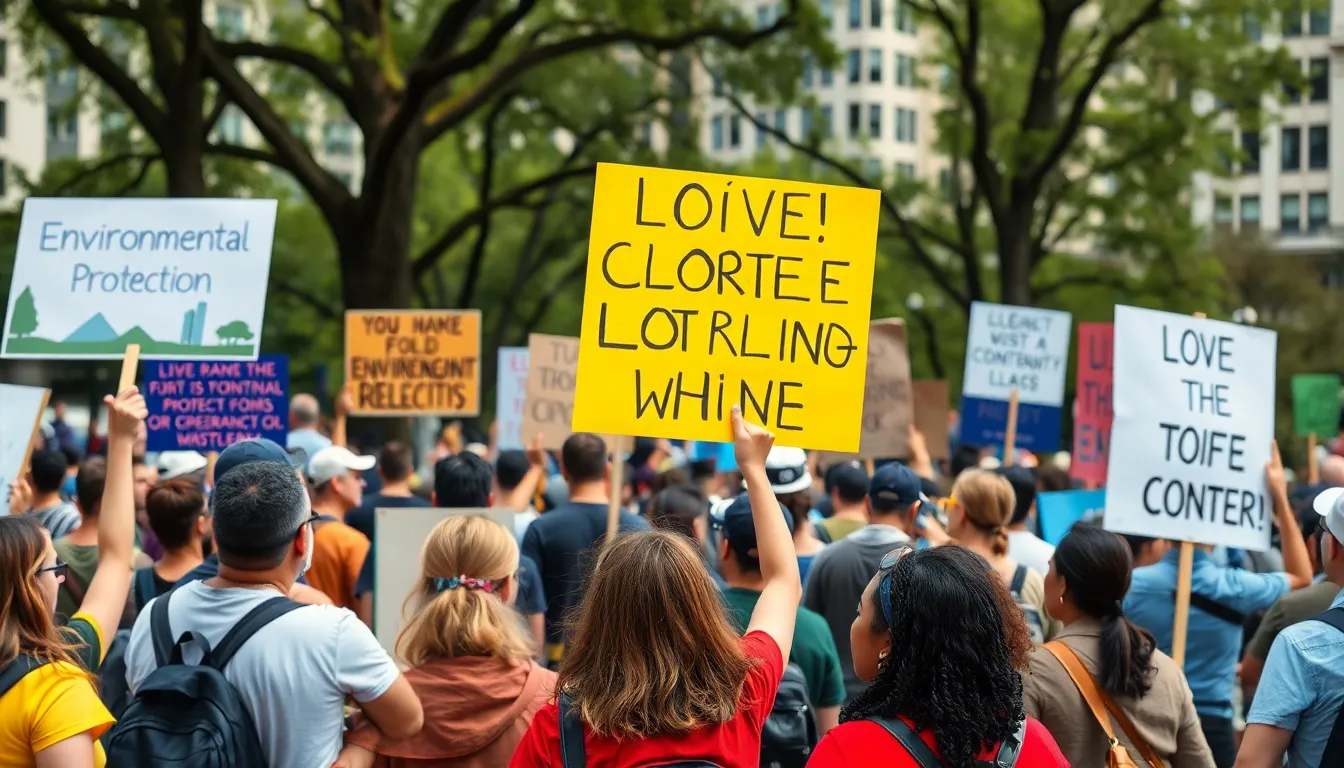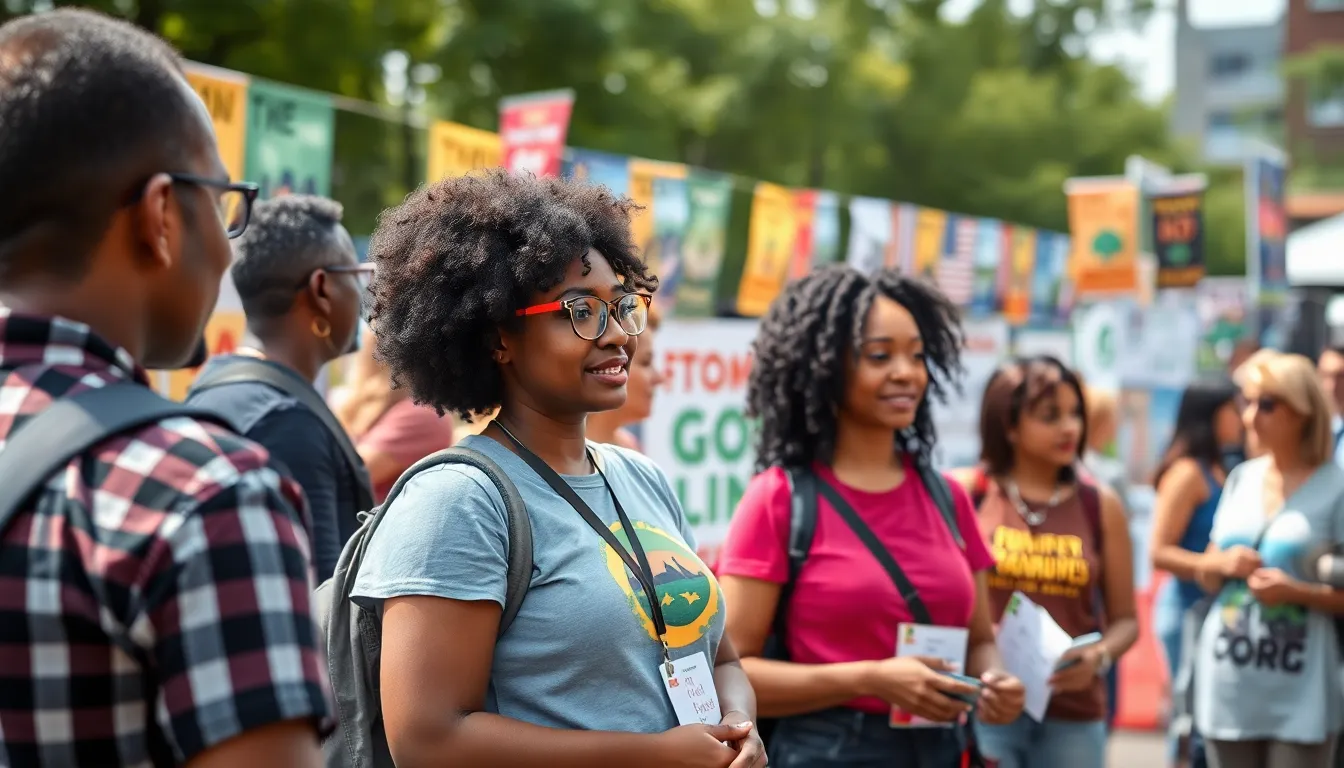In a world bursting with headlines that can make you laugh, cry, or scratch your head in confusion, staying updated on global events has never been more crucial. From political shenanigans to heartwarming stories of human resilience, world news offers a rollercoaster ride through the chaos of our times. Whether it’s a new tech breakthrough or a bizarre animal rescue, there’s always something happening that deserves a second glance.
Table of Contents
ToggleOverview of World News
Staying informed about global events remains crucial in today’s rapidly changing landscape. Coverage encompasses various topics, including politics, technology, human interest stories, and environmental issues. Each story offers unique insights into different cultures and societies.
Recent developments reflect significant political shifts worldwide. Elections in countries such as Brazil, India, and Nigeria introduced new leaders and policies, shaping national and international relations. Political unrest in regions like Eastern Europe and the Middle East continues to dominate headlines, highlighting ongoing conflicts.
Technological advancements transform industries and lifestyles. Innovations such as artificial intelligence and renewable energy solutions play vital roles in addressing climate change and improving communication. These developments impact economies and drive global cooperation.
Human interest stories capture resilience and hope. Recent narratives about communities overcoming hardships demonstrate the strength of the human spirit. Coverage of humanitarian efforts shines light on global issues, from refugee crises to poverty alleviation initiatives.
Environmental challenges receive increasing attention. Global warming, deforestation, and ocean pollution affect ecosystems and human health. Reports emphasize the need for urgent action, showcasing efforts by governments and organizations toward sustainability.
Diverse animal rescue stories inspire audiences. Efforts to protect endangered species and rehabilitate abused animals highlight the importance of biodiversity. These stories often resonate emotionally, encouraging public involvement in conservation.
World news serves as a vital resource for understanding current events and their implications. Engaging with various sources ensures a well-rounded perspective on the complexities of today’s global environment.
Current Significant Events

Global events shape the world daily, reflecting shifts in politics and environmental challenges. Recent developments showcase a mix of political changes and pressing environmental issues.
Political Developments
Elections in Brazil, India, and Nigeria recently led to the rise of new leaders and policy changes. Those transitions impact both domestic and international relationships. In Brazil, for instance, policies now emphasize social equity and environmental sustainability. India’s elections highlight a focus on economic growth and regional security. Nigeria’s political landscape reflects challenges in governance and security, particularly regarding terrorism and economic instability. Conflict continues in Eastern Europe and the Middle East, influencing international diplomatic efforts and humanitarian responses.
Environmental Issues
Global warming remains a critical concern, with rising temperatures affecting ecosystems and weather patterns. Pollution also poses significant threats to public health and biodiversity. Nations are stepping up efforts to address climate change through renewable energy initiatives. Various countries have set ambitious targets to reduce carbon emissions and transition to sustainable practices. Increased public awareness drives the call for stronger environmental policies. Diverse animal rescue efforts demonstrate the importance of biodiversity and conservation, engaging communities in meaningful environmental actions.
Impact of Technology on World News
Technology significantly alters how people consume world news. It enhances information accessibility while changing the dynamics of news delivery.
Social Media Influence
Social media platforms have transformed news dissemination. Users access breaking news in real-time, sharing updates with vast audiences. Information spreads rapidly, impacting public opinion and governmental policy. Platforms like Twitter and Facebook facilitate discussions around global events, engaging users in debates on pressing issues. Audience participation shapes narratives, highlighting diverse perspectives often overlooked by traditional media. Algorithms curate content based on user interests, influencing the type of news consumed. With immediate access to information, misinformation can also proliferate, making media literacy crucial for audiences.
Rise of Citizen Journalism
Citizen journalism has gained prominence due to technological advancements. Ordinary individuals report on local events, creating a grassroots approach to news coverage. Platforms like blogs and social media empower citizens to share first-hand accounts, adding unique insights to global stories. This grassroots reporting often fills gaps left by mainstream media, providing diverse narratives. Readers gain new perspectives on events and issues that directly affect communities. Traditional journalists sometimes rely on citizen sources for unauthorized reports, blending professional and amateur efforts. This collaborative environment fosters increased transparency and accountability in news reporting.
Challenges Facing World News
Numerous challenges impact world news quality and reliability today. Misinformation and fake news present critical obstacles, while accessibility and coverage gaps hinder comprehensive reporting.
Misinformation and Fake News
Misinformation spreads rapidly across social media platforms, complicating the task of discerning fact from fiction. Studies indicate that approximately 70% of people encounter fake news on social media, often leading to poorly informed opinions and decisions. This environment fosters a distrust of reliable sources, which can undermine the role of journalism in society. Journalists face increased pressure to verify information quickly, often leading to sensationalized reporting that can distort the truth. Combatting misinformation requires a collective effort, where news organizations, tech companies, and audiences work together to promote media literacy and critical thinking skills.
Accessibility and Coverage Gaps
Accessibility remains a significant issue for many regions, limiting people’s ability to stay informed. Around 40% of the global population has inadequate access to reliable internet or news sources, creating disparities in information distribution. Developing areas often receive minimal news coverage, which results in a lack of awareness about critical local and global issues. Additionally, language barriers further complicate the dissemination of news. Journalists and media outlets must prioritize inclusivity to bridge these gaps, fostering diverse perspectives through multilingual reporting and localized content that truly reflects the world’s complexities.
Future of World News
Emerging trends in world news reflect significant shifts in information dissemination and audience engagement. Advances in technology rapidly change how news is shared and consumed. Mobile devices enable on-the-go access to breaking news, allowing users to stay informed regardless of location.
Innovations in artificial intelligence enhance news gathering and reporting capabilities. AI algorithms assist in analyzing vast amounts of data, identifying stories that resonate with audiences. Increased reliance on data-driven insights supports media organizations in tailoring content to meet audience preferences.
Participatory journalism continues to gain momentum as citizens engage in storytelling. Enhanced access to social media empowers individuals to share experiences and perspectives. User-generated content adds depth and diversity to traditional news narratives, promoting inclusivity across various platforms.
Challenges persist amid these advancements. Tackling misinformation remains critical in maintaining public trust. Reports indicate that about 70% of users encounter fake news on social media platforms, necessitating strong fact-checking efforts by news organizations.
A lack of access to credible news sources affects nearly 40% of the global population. Addressing this issue involves strategizing on how to expand coverage and improve inclusivity in journalism. Language barriers exacerbate gaps in reporting, highlighting the need for diverse voices in newsrooms.
Environmental stories will remain front and center in discussions about sustainability. Global warming and pollution underscore the urgency for action, inspiring journalists to cover these pressing issues comprehensively. Continued public interest will drive conversations around climate change and promote calls for accountability in reporting.
Transparency and accountability strengthen the future of journalism. Proactive measures to combat misinformation foster a healthier media landscape. Collaboration among journalists, tech companies, and the public contributes to an informed society, paving the way for a more credible world news environment.
Staying connected to world news is vital in today’s fast-paced environment. As global events unfold it’s crucial to engage with diverse sources to grasp the complexities at play. The interplay of politics technology and human stories shapes not only national landscapes but also international relations.
Understanding these developments fosters a more informed public. As individuals navigate the challenges of misinformation and access disparities they can contribute to a more transparent media landscape. Embracing participatory journalism and advocating for sustainability will empower communities and promote accountability.
Ultimately staying informed about world news equips individuals with the knowledge to make meaningful contributions to society and the planet.







